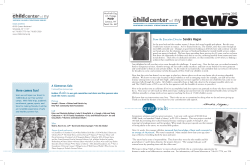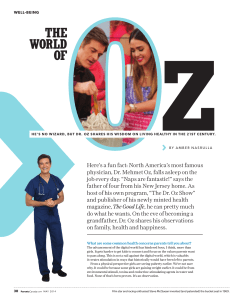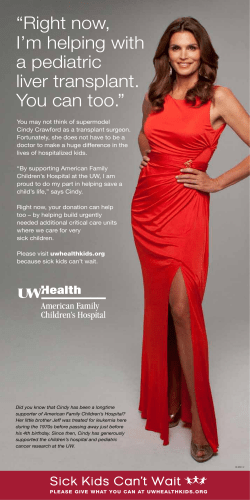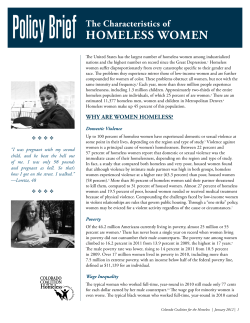
OF THE 1930s TEEN HOBOES
Nonfiction NAR NONFRI ATIVE CTION Reads but itl’ike fiction— s all tr ue! THROUYGEH S YOUR E True Teen Stories From History TEEN HOBOES OF THE 1930s During one of the most desperate times in America, 250,000 KIDS LEFT THEIR homeS TO TRY TO SURVIVE ON THEIR OWN Check It Out as you read, look for: Cause-Effect Relationships Think about what caused the teens in this article to become hoboes. How did living on trains affect them? What effect did these teens have on the places they traveled to and on the country as a whole? I By Kristin Lewis n the summer of 1934, 13-year-old Robert Symmonds found himself chasing an enormous freight train. His plan was to hop onto one of the moving cars without getting caught by the railroad police—and without getting sucked onto the tracks, where he would be crushed beneath 3,000 tons of steel. Luckily, the train was moving slowly. He reached out for the ladder on a tank car and, gripping tightly, hoisted himself up. He climbed to the top of the car, where he found a narrow wooden plank to sit on. There wasn’t much to hang on to—only a small metal bar. At least he was safe. WHAT IS A HOBO? During the Great Depression, millions of people became “hoboes.” A hobo is a homeless and often poor person who travels in search of work. During the 1930s, most hoboes traveled from place to place by sneaking onto freight trains. 4 Scholastic Scope • MARCH 7, 2011 Left: ©AP Photo Images; Right: ©Bettmann/Corbis But not for long. The train began to pick up speed. The wind whipped past Robert’s face as the train approached 45 miles an hour, then 55, then 65. “The plank started to vibrate like a springboard,” Robert remembers. It tossed him in the air, and he struggled to hang on. “All I could think of was that I shouldn’t have gotten on the train. If I lose my grip, I’m gonna die. I’m gonna go under the wheels. What will my mother think? She’ll get word that her darling son was found mangled along the railroad tracks.” Scholastic.com/Scope • MARCH 7, 2011 5 A Harsh Reality Miraculously, Robert managed Boxcar kids soon discovered that to hold on until the train reached hazard of being sucked under a train mouths to feed. “Go home to your and crushed to death. From 1929 to parents,” people would say. After all, its next stop. By then, he was so the reality of riding the rails was 1939, nearly 25,000 train hoppers if an adult couldn’t get work, why exhausted he could barely walk. But far grimmer and more dangerous died. Another 27,000 were injured. should a kid? that didn’t stop him from sneaking than what they had read about in Those who managed to survive into a boxcar a few cars back. There glossy magazines. Danger lurked the train rides faced hunger and kids away. Many people extended was no way he was going to give up everywhere, even before a kid illness. They might go days without charity to young hoboes because they that easily. stepped onto a train. The rail yards food. Weakened by hunger and cold, knew how fragile their own security were patrolled by “bulls,” guards many became sick with diseases like was. During the Depression, anyone paid by the railroad companies. pneumonia. They would wander could be weeks away from losing a These men could be vicious. They into towns, ragged and filthy and home. Even wealthy people could would beat kids before hauling them sometimes infested with head lice. end up homeless if they lost their off to jail. Some even stole what little They would beg for food or try to jobs. Then they might be the ones money the kids had. get short-term jobs in exchange hopping trains and begging for food. In the 1930s, more than 250,000 kids like Robert rode freight trains across America. They were known as “boxcar children.” Poor and homeless, they hopped from train to Many boxcar kids left home because they felt like a burden on their parents. train and drifted from town to town. Some sought adventure. Most were looking for work, their families too “If I lose my grip, I’m gonna die.” —Robert Symmonds poor to care for them. No matter The greatest danger was the for a few cents or a cup of coffee. train itself—thousands of tons of But the towns often had their own metal speeding along the tracks. suffering to deal with. Many towns Newspapers were full of gruesome where they came from or where simply couldn’t cope with more Not everyone turned the boxcar A Glimmer of Hope Eventually, Robert got a job as a farm laborer, just as he had hoped they were headed, they all came to Great Depression, Robert shares ride south and get a job harvesting stories about kids who were injured understand one brutal truth: Life on the story of how he became one crops—if he could survive the or killed while hopping trains. A fall the rails was treacherous. of the boxcar kids. His dad had journey. from a boxcar roof could result in a migrating from farm to broken arm, a broken leg, or a broken farm to work in the fields. Penniless, Homeless The 1930s was a period of been a successful business owner. The family lived in a nice house in Seattle, Washington, and there A Thrilling Adventure neck. A foot or a leg that slipped By the 1930s, the boxcar kids had beneath a train’s wheels was instantly to. Each spring, he would hop trains up and down the West Coast, It was backbreaking labor. He sent as much money extreme hardship in the United was always food on the table. Then become a national phenomenon. States. The country had fallen into Robert’s father lost everything. It Newspapers wrote about them. money, little as it was, would financial disaster. Banks had failed. wasn’t long before the family was Magazine articles offered advice on see his family through winter. Factories had shut down. Farmers penniless and homeless. A relative how to survive as a hobo. There was couldn’t sell their crops. Many offered them a cabin in Oregon, but even a movie made on the subject. families lost their life savings. By life wasn’t any better there. There 1932, one in four Americans was was no running water, no electricity, stressed that a boxcar was no jobless. Hundreds of thousands of and no money. place for a kid to live, teens across America found these tales utterly of a meal, a place to sleep, and the only son, to save his family. He thrilling. Life on the rails seemed like employment. This period became had seen young hoboes riding in a fantastic adventure. Many teens known as the Great Depression. To the boxcars of trains that passed imagined stopovers in glamorous this day, it remains the longest and through town. He had even hopped big cities and warm summer nights most brutal economic depression a few trains himself—just for fun— rolling through the wilderness. On in American history. like that terrifying tanker car he had a train, they would be free, making ridden in 1934. But he had never their own way in the world. Many gone very far from home. kids found the idea so alluring that Like so many others, Robert and his family were hit hard. In Errol Lincoln Uys’s book Riding the Rails: Teenagers on the Move During the 6 Scholastic Scope • MARCH 7, 2011 So in 1938, at age 16, Robert hiked to the rail yard. He planned to they ran away to hop trains—even kids who had plenty to eat at home. ©Bettmann/Corbis; Inset photo: The Granger Collection, NYC—All rights reserved Robert decided it was up to him, Though the articles usually ©Scherl/SV-Bilderdienst/The Image Works people roamed the country in search severed. There was also the potential home as he could—and that Other kids were not as lucky. They drifted from Wyoming to Kansas, from Oklahoma to Ohio, in search of work. Few found enough of it. There was a glimmer of hope in 1933, when President Franklin Delano Roosevelt created the Civilian Conservation Corps. The purpose of the CCC was to hire unemployed, unmarried men between the ages of 18 and 25 to work in national parks and forests. Look at this photograph and billboard from the 1930s. What can you infer about life during the Great Depression? They would be housed, well fed, and paid $30 a month, with the stipulation that 25 of Scholastic.com/Scope • MARCH 7, 2011 7 HOMELESS TEENS TODAY In the 1930s, they were known as boxcar children. Today they would be called homeless teens. Homelessness among teens remains an enormous problem in the U.S. More than 1.7 million American teenagers are without a home. They live on the street and in shelters, cars, tents, and abandoned buildings. How do they end up there? Some belong to families that are homeless. Others are on their own—having run away from home to flee abuse, violence, or family tensions. Some kids are homeless because their families fell apart after divorce or a parent lost a job or became ill. No matter what the cause, all homeless teens face common perils. See the chart at right. For the boxcar kids still month was enough to pay rent and alive today, the memory of buy groceries for a small family. the 1930s is bittersweet. The the misery they witnessed young men. They planted trees, stole their adolescence. fought forest fires, built dams, and The boxcar kids left home cleared campgrounds. In 1939, as children and overnight Robert secured a six-month spot at became adults. On the other a CCC camp in Montana. Today, you hand, riding the rails made can still hike the trails that kids like them self-reliant and deeply Robert helped to clear. compassionate. And of that By the 1940s, the era of the boxcar kids was coming to an end. The country’s economy was starting to recover. War was brewing in Europe and Japan. Many kids left the rails and the CCC camps to serve in the military. Robert was one of them. He joined the Navy and fought in World War II. After the war, he got married and raised four children 8 Scholastic Scope • MARCH 7, 2011 participate in gang activity abuse drugs in their lifetimes get pregnant or get someone pregnant try to commit suicide STATISTICS: dosomething.org (drop-out rate, suicide); national network for youth (gangs, drug abuse, pregnancy) suffering they endured and 1933 to 1943, it hired 2.5 million A New Era drop out of school in California. needy families. In those days, $25 a The CCC was a success. From 75% 50% 50% 50% 32% they are incredibly proud. • The Civilian Conservation Corps had more than 1,000 camps across the country. Contest Write About Cause and Effect In a paragraph, explain one of the cause-andeffect relationships in the article. Remember, one cause may have multiple effects. Send it to TRAIN CONTEST by April 1, 2011. Ten winners will each get a DVD of the PBS documentary Riding the Rails. See page 2 for details. Get this activity Online Top: iStockphoto.com; center: ©AP Photo Images those dollars be sent home to their Teen Homelessness by the Numbers
© Copyright 2026















